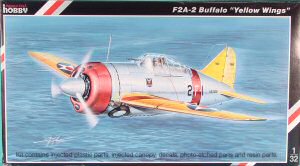
Special Hobby 1/32 F2A-2 Buffalo Kit First Look
By Michael Benolkin
| Date of Review | August 2006 | Manufacturer | Special Hobby |
|---|---|---|---|
| Subject | Brewster F2A-2 Buffalo | Scale | 1/32 |
| Kit Number | 32010 | Primary Media | Styrene, Resin, PE |
| Pros | Excellent detailing in the cockpit and inside the cowling | Cons | |
| Skill Level | Experienced | MSRP (USD) | $59.95 |
First Look
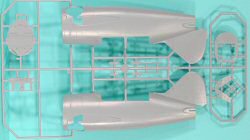 |
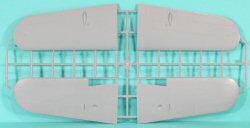 |
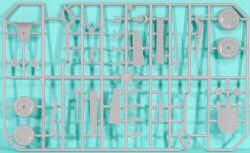 |
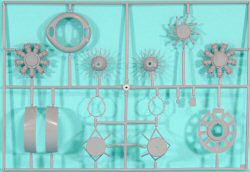 |
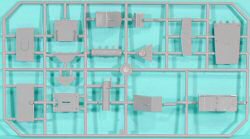 |
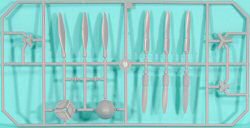 |
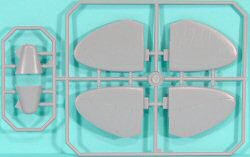 |
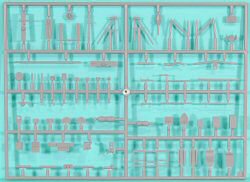 |
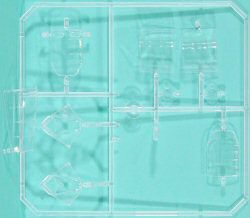 |
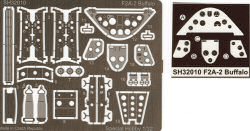 |
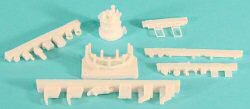 |
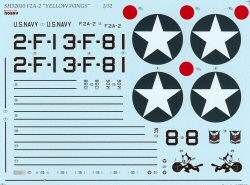 |
Brewster & Company was founded in the early 19th century as a manufacturer of horse-drawn wagons and carriages. In 1920, the Brewster & Company Aircraft Division started out as a vendor to the Naval Aircraft Factory producing aircraft floats. Soon they were also producing sub-assemblies for Chance Vought and Grumman. Nevertheless, the engineers at Brewster wanted to develop an aircraft design of their own.
Brewster's first aircraft opportunity was for a low-wing, all-metal, two-place, torpedo/bomber/reconnaissance aircraft. The design was approved by the US Navy and designated SBA. Production of the SBA was diverted to the Naval Aircraft Factory and the production aircraft were designated SBN-1.
The next opportunity was for a new generation of monoplane fighter that could operate from aircraft carriers, this requirement coming in the late 1930s. Two designs would move forward out of this competition, the Brewster F2A and the Grumman F4F. Brewster succeeded in with their new design that was named 'Buffalo' and orders came in from overseas for this new fighter.
In the hands of the Finnish Air Force, the Buffalo was achieving 3:1 kill ratios against Stalin's fighters, while in the Pacific, the aircraft was faring better than its Japanese counterparts. What sealed the fate of the aircraft was its developer - Brewster. Aggressive marketing resulted in four times the orders than the production capacity of the Brewster factory. Federal directives for overseas deliveries meant that US Navy orders were a low priority in order to get aircraft out to allies in combat. The company was then caught in the middle of an arms scandal arising from the Spanish Civil War. The consequences of all of these woes put the company under government control, its production facilities were used to build sub-assemblies for Grumman and Consolidated, and it was ultimately shut down in 1944.
The full potential of the Buffalo was never realized due to the problems within the company. The US aircrews that would take the Buffalo into action against the Japanese at Midway were not yet combat seasoned, and the veteran Japanese pilots decimated the defending F2As and F4Fs. Nevertheless, proof that the aircraft was capable came out of that same battle.
Captain William Humbert, USMC, was attacking a Japanese bomber when his F2A was jumped by Zeros. A 20mm round blew a hole through the fuselage but the aircraft was okay. He dove the aircraft down to the surface of the ocean and used the airspeed gained in the dive to extend away from a single Zero that followed. When Captain Humbert had sufficient lead on the Zero, he reversed the aircraft and flew head-on towards the Zero. He opened fire with his machine guns until he passed the A6M2, then saw the aircraft fly into the ocean. In the right hands and with the right tactics, the Buffalo had held its own as it had in service with Finland, Dutch East Indies, Australia and New Zealand.
Special Hobby has released the F2A-2 Buffalo in 1/32 scale, and it is nice! This is the first time the Buffalo has been produced in this scale in styrene, though there are supposed to be other versions in the series to follow. If you'll recall, this was originally produced in 1/48 scale in conjunction with Classic Airframes to produce the family of Brewster F2As.
The parts are molded in light gray styrene and feature very nicely executed surface detailing. All of the panel lines, etc., are scribed. The kit is presented on eight parts trees, plus a single tree with the various clear parts.
The kit includes a small bag of resin parts containing the engine rear accessory pack, exhaust manifolds, and a number of other small details.
A fret of photo-etched parts round out this kit that provide some great detailing in the cockpit and underwing bomb racks. An acetate instrument sheet fits behind the photo-etched panel adding further realism in detail.
The cockpit captures the look of the open floor that allows the pilot to see through the ventral window. Several canopy options are present on the clear parts, but these options are used on the export versions of the Buffalo.
In addition to the nicely detailed cockpit, the kit also provides a nice looking engine and lots of detailing for the insides of the main wheel wells. You can see all the way up to the machine gun mounts at the top of the fuselage!
When the 1/48 Buffalo was released, I decided to compare the F2A-2 kit with the line drawings found in the Kagero F2A Buffalo book. The outline and shape appear to be spot-on. I am going to assume that nothing has changed with the scale-up.
Markings are provided for two examples:
- F2A-2, BuNo 1406, VF-2, 2-F-1, USS Lexington, 1940
- F2A-2, BuNo 1398, VF-3, 3-F-8, USS Saratoga, 1940
This release captures the F2A in its yellow-wing livery and will definitely add some color to your scale carrier deck (shelf). From the various extra parts not used in this build, including three sets of prop blades, it is clear we'll be seeing the family Buffalo in 1/32nd scale as well. Excellent!!
References:
- Brewster F2A Buffalo, Andre Zbiegniewski, Kagero, 2003, ISBN 83-89088-14-2
- F2A Buffalo in Action, Jim Maas, Squadron/Signal Publications, 1987, ISBN 0-89747-196-2







